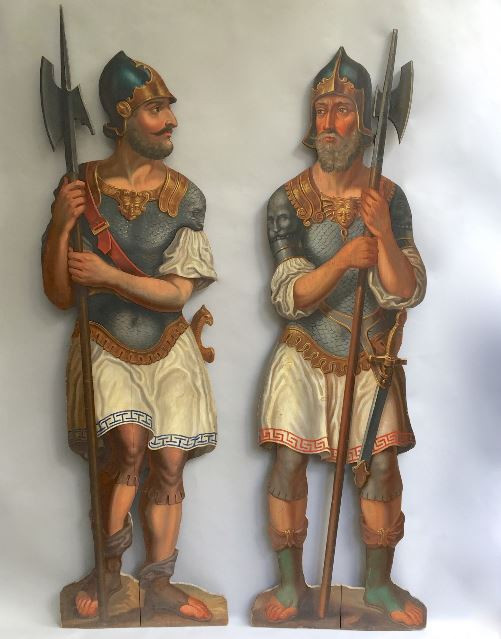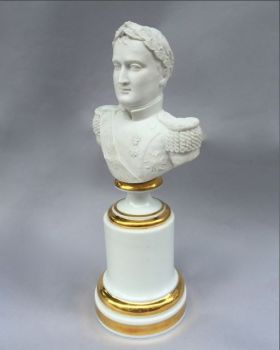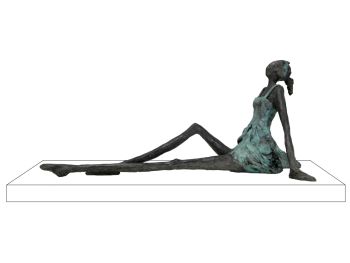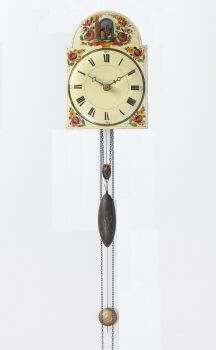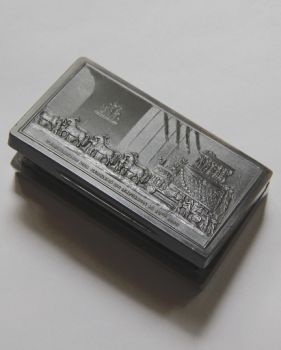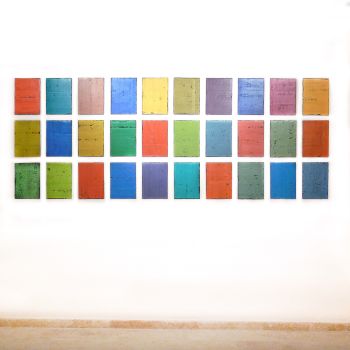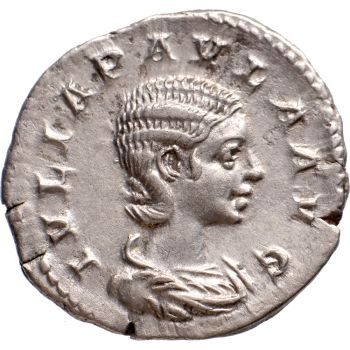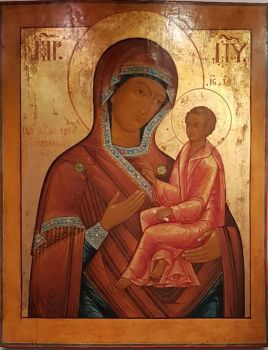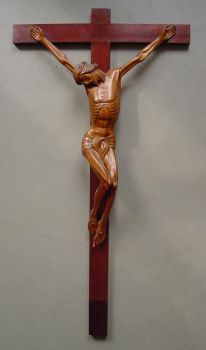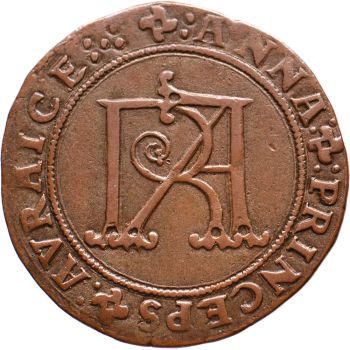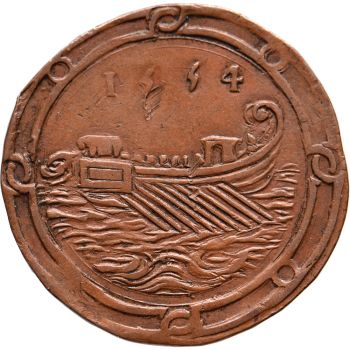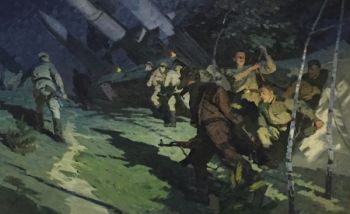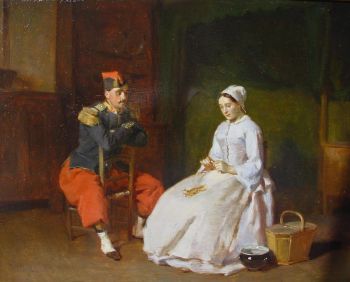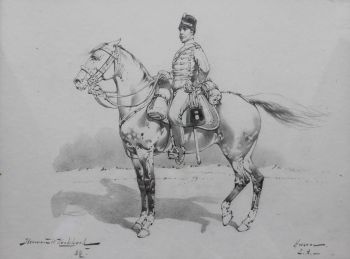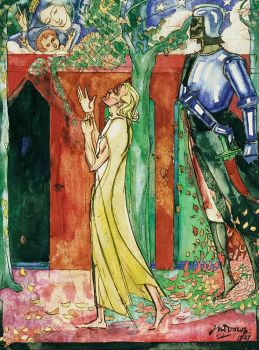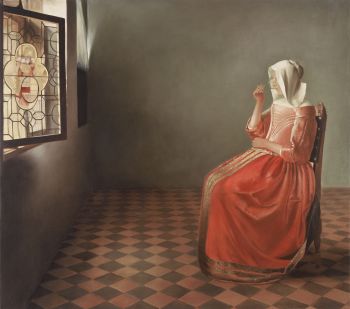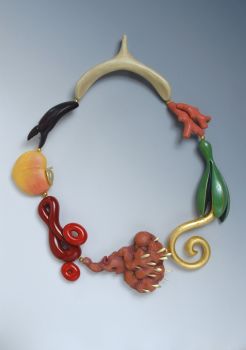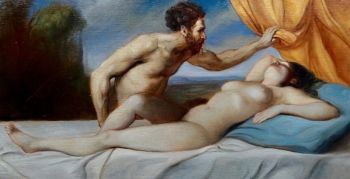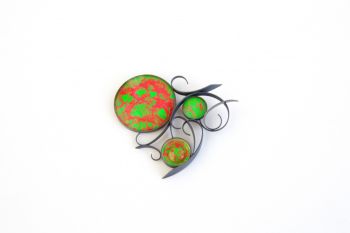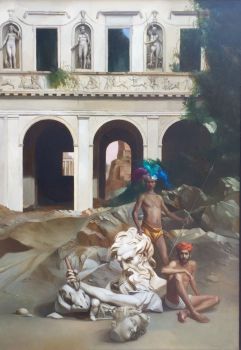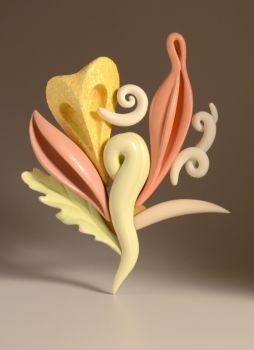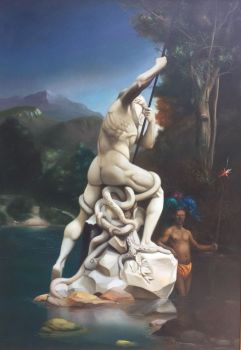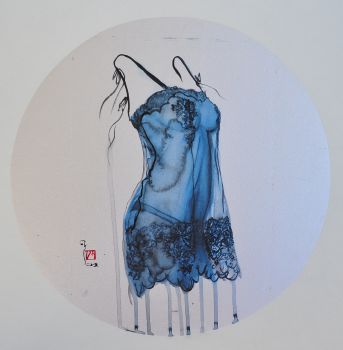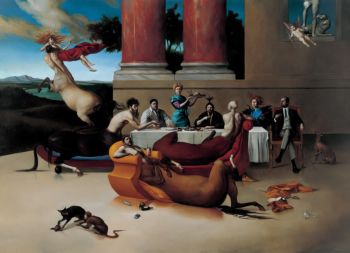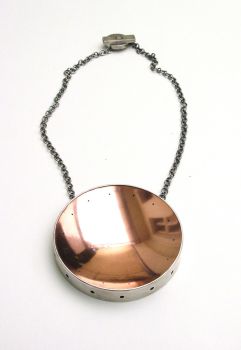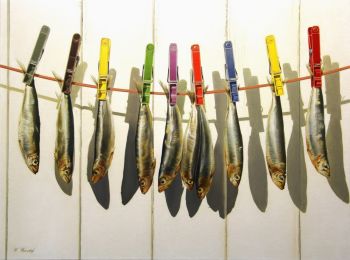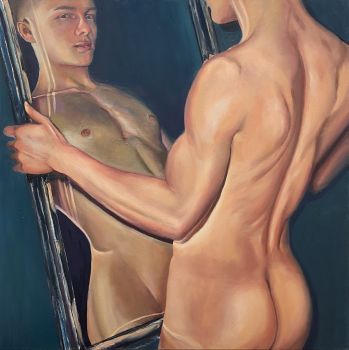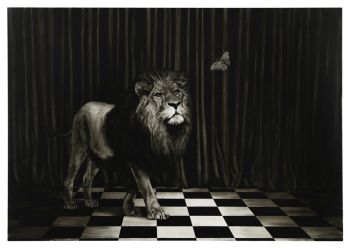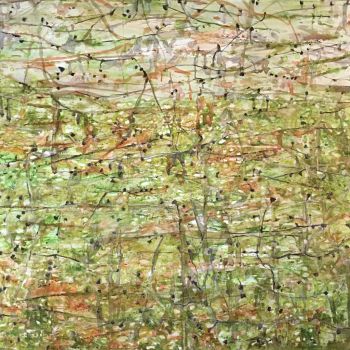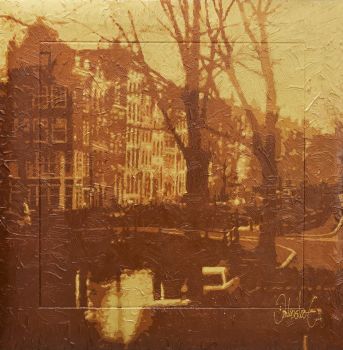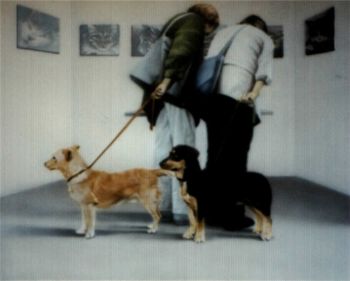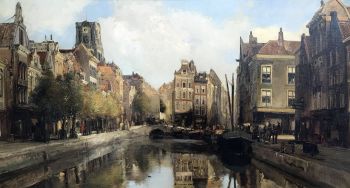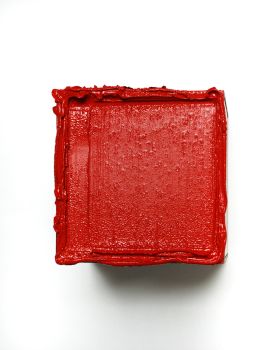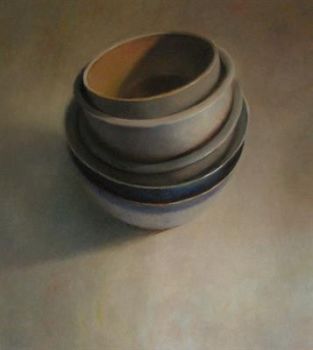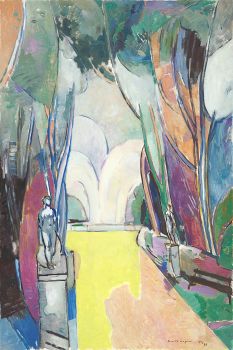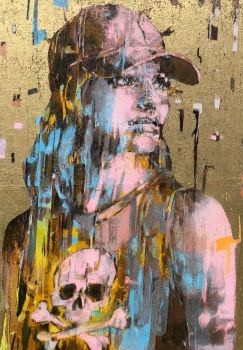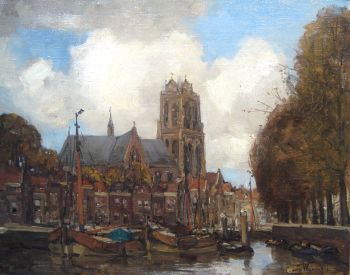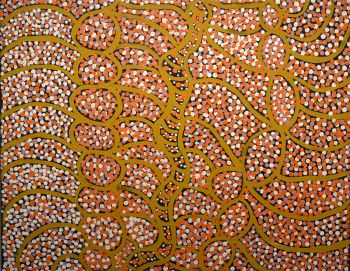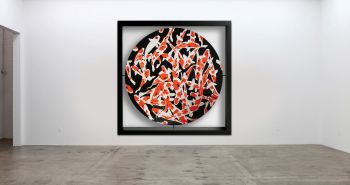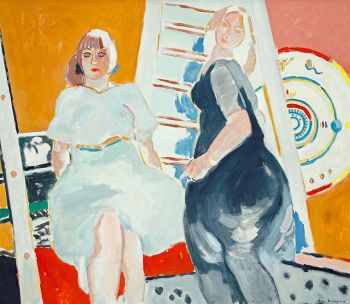Two dummy boards of Soldiers or Guards 18th century
Unknown artist
WoodPaint
187 cm
ConditionExcellent
Currently unavailable via Gallerease
- About the artworkTwo life-sized painted wooden soldiers or guards, with chamfered edges to increase the illusion of three-dimensions. On the backside an iron bracket is attached; the soldiers can stand freely by attaching a wooden rail into the bracket. Dummy boards were very popular during the 18th and early 19th centuries, especially in England's country houses. Their function is still a mystery. They certainly had a decorative function and could serve to entertain guests, but it is also claimed that they should call the suggestion that there were actually people in the house during the periods the family was traveling. The life-sized trompe l'oeil painted figures with representations of soldiers, servants, children or animals were placed in the hall, in a staircase or next to the fireplace. The equipment of these guards shows a mix of elements from the classical period, late Middle Ages and early Renaissance. For example, the halberd is based on a model from the late 15th or 16th century.
A few small repairs to the boarders and renewed rails to allow the boards to stand upright.
Respectively 180 and 187 cm high. - About the artist
It might happen that an artist or maker is unknown.
Some works are not to be determined by whom it is made or it is made by (a group of) craftsmen. Examples are statues from the Ancient Time, furniture, mirroirs, or signatures that are not clear or readible but as well some works are not signed at all.
As well you can find the following description:
•“Attributed to ….” In their opinion probably a work by the artist, at least in part
•“Studio of ….” or “Workshop of” In their opinion a work executed in the studio or workshop of the artist, possibly under his supervision
•“Circle of ….” In their opinion a work of the period of the artist showing his influence, closely associated with the artist but not necessarily his pupil
•“Style of ….” or “Follower of ….” In their opinion a work executed in the artist’s style but not necessarily by a pupil; may be contemporary or nearly contemporary
•“Manner of ….” In their opinion a work in the style of the artist but of a later date
•“After ….” In their opinion a copy (of any date) of a work of the artist
•“Signed…”, “Dated….” or “Inscribed” In their opinion the work has been signed/dated/inscribed by the artist. The addition of a question mark indicates an element of doubt
•"With signature ….”, “With date ….”, “With inscription….” or “Bears signature/date/inscription” in their opinion the signature/ date/ inscription has been added by someone other than the artist
Artwork details
Related artworks
- 1 - 4 / 12
Unknown artist
Japanese art deco lacquervase with Scarab beetle motif1920 - 1950
Price on requestDille Art
Unknown artist
A JURUNA TRIBE FEATHER HEADDRESS1900 - 1950
Price on requestZebregs & Röell - Fine Art - Antiques
1 - 4 / 24- 1 - 4 / 24
Unknown artist
Antique Russian wooden icon: Archangel Gabrielearly 17th
Price on requestKunsthandel H.W.C. Dullaert Icons
1 - 4 / 24

